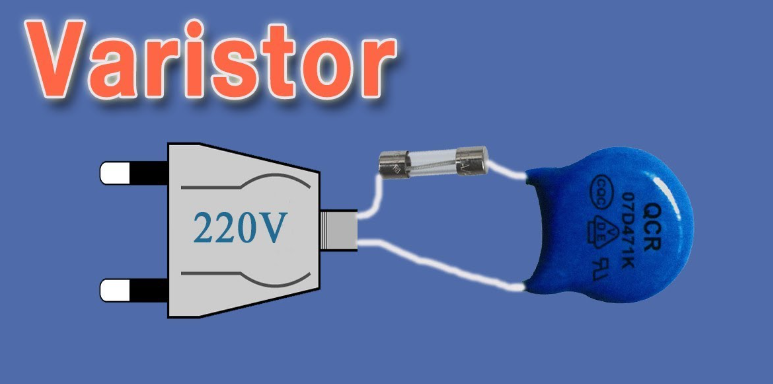
In the world of electrical engineering and circuit protection, varistors hold a pivotal role in safeguarding electronic devices from voltage fluctuations and transient surges. These voltage-dependent resistors exhibit nonlinear behavior, providing low resistance under normal operating voltages while diverting excessive voltage spikes away from sensitive circuits. Comprehensive understanding of varistor testing procedures is essential to ensure their efficacy in diverse applications across various industries.
Exploring Varistors: A Foundation for Safety
Varistors, commonly crafted from zinc oxide (ZnO) or silicon carbide (SiC) materials, act as semiconductor devices protecting electronic circuits against voltage transients. They are engineered to maintain a high resistance under nominal voltages, thereby impeding current flow. However, when subjected to high-voltage surges, they swiftly transition to a low-resistance state, effectively shunting excess voltage to ground and shielding the circuit from potential damage.
Types of Varistors
Metal Oxide Varistors (MOVs): Predominantly made of zinc oxide, these varistors are versatile and widely used across various applications due to their reliability and cost-effectiveness.
Silicon Carbide Varistors (SICVs): Silicon carbide varistors, offering robust performance in extreme conditions, find applications in high-power systems where elevated energy absorption capabilities are required.
The Crucial Role of Varistor Testing
The reliability and efficiency of varistors directly influence the safety and functionality of electronic systems. Varistor testing is indispensable in ensuring these components meet stringent performance standards and validate their ability to safeguard against transient voltage events. Several key reasons emphasize the significance of robust varistor testing protocols:
1. Safety Assurance:
Varistors serve as the frontline defense against voltage spikes that could otherwise damage sensitive electronics or pose safety hazards. Rigorous testing protocols validate that varistors respond as intended to transient events, thereby ensuring the safety of connected devices and individuals.
2. Equipment Reliability:
Electronic devices are inherently vulnerable to voltage fluctuations. Varistors play a critical role in extending the lifespan of equipment by diverting excessive voltage away from critical components. Testing procedures are crucial to ensuring their reliability and longevity.
3. Compliance with Standards:
Industries adhere to specific standards to ensure the quality and safety of electrical equipment. Varistor testing confirms compliance with relevant standards, assuring the suitability of varistors for specific applications while meeting regulatory requirements.
4. Performance Validation:
Varistors must exhibit consistent performance across varying environmental conditions. Thorough testing evaluates their response and reliability under diverse scenarios, including temperature fluctuations, humidity levels, and other relevant parameters, ensuring their efficacy in real-world applications.
Comprehensive Varistor Testing Methods
To evaluate the performance and characteristics of varistors, several testing methodologies are employed, each serving a distinct purpose:
1. Electrical Testing:
This involves subjecting varistors to voltage stress tests, exposing them to specific voltage levels to evaluate their response. Parameters such as clamping voltage, peak current, and energy absorption capabilities are meticulously measured to ensure compliance with desired specifications.
2. Temperature Cycling:
Varistors undergo cyclic temperature variations to assess their performance under different environmental conditions. This testing method determines the component’s stability and reliability across a spectrum of temperatures, ensuring functionality under diverse operational scenarios.
3. Environmental Testing:
Simulating real-world conditions, varistors undergo tests mimicking environmental factors like humidity, vibration, and mechanical shock. These comprehensive tests ensure varistors can withstand harsh conditions without compromising their functionality or protective capabilities.
4. Life Testing:
Varistors are subjected to prolonged operation under specified voltage and temperature conditions to assess their longevity and endurance. This test provides invaluable insights into the component’s lifespan and reliability over extended periods, aiding in predicting its performance in practical applications.
Conclusion: Upholding Electrical System Integrity
Varistors stand as critical components in protecting electrical and electronic systems from transient voltage events. Through meticulous varistor testing methods, their reliability, safety, and performance are assured, enabling these components to effectively shield sensitive circuits in diverse applications. Understanding and implementing robust varistor testing procedures are fundamental in maintaining the integrity and functionality of electrical systems, contributing significantly to enhanced safety and operational efficiency in a broad technological landscape.
In conclusion, the significance of varistor testing cannot be overstated in ensuring the resilience and efficacy of electrical systems, highlighting the critical role these components play in modern technological infrastructure.
